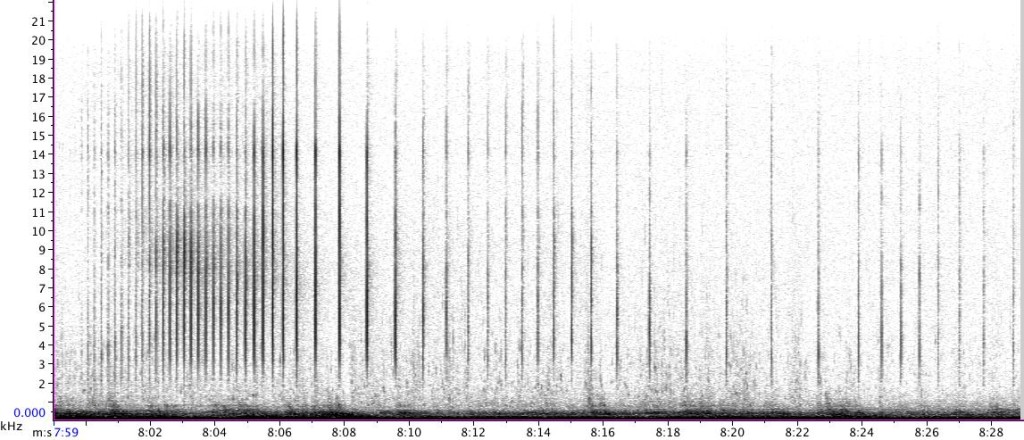While our team spotted no right whales in the Bay yesterday (the other teams combined found 4-6) I finally got my sperm whale encounter! Granted all I saw of it were its flukes, and I didn’t even get a picture…so here is one from Arkive.

From as far away as we were, and being that the flukes were pretty unremarkable, we weren’t positive at the time that what we had was in fact a sperm whale. Well considering they can stay down for over an hour, we were either going to have to assume that it was (which is bad form) or we could do what we do best and drop a hydrophone over the side of the boat to listen. And that is what we did. And this is what we heard.
Using a spectrogram, we can visualize what we are hearing as well. Here is a spectrogram of the above audio clip.

This animal was likely a male – mature male sperm whales forage at higher latitudes, often alone, while the larger pods consisting of females, calves, and juveniles spend all of their time in the tropics and sub-tropics. Sperm whale social vocalizations include stereotyped, repetitive patterns of clicks called codas. The solidarity of the males in these higher latitude habitats means that their vocal repertoire is different than that of the female/calf/juvenile social groups – codas are not heard here. The clicks we were hearing from our whale were therefore likely being used for echolocation while the animal was searching for food. Pretty neat, yes? Yes.
So while we are bummed about the paucity of right whales, I got to hear a sperm whale that was somewhere below me. I’ll take it.